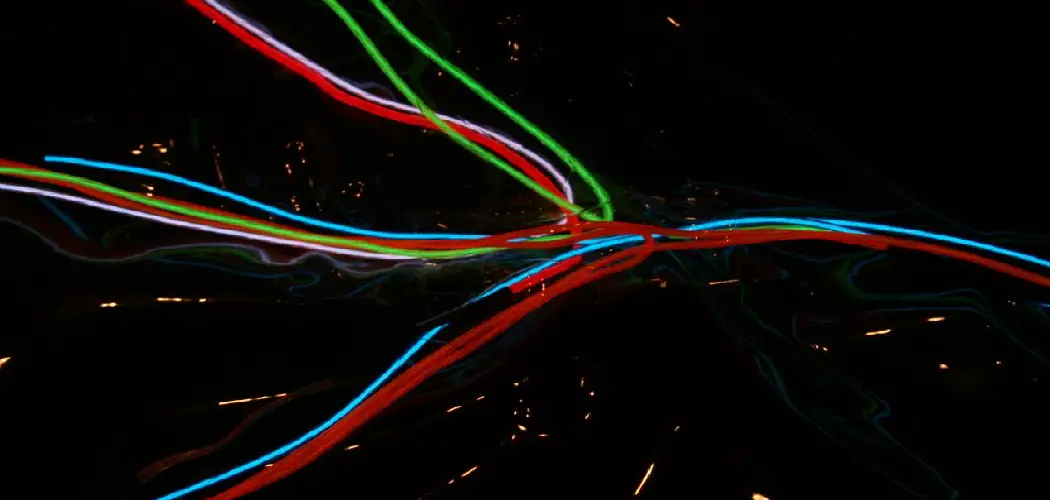Electroluminescent (EL) light is a versatile and energy-efficient lighting technology that emits light when an electrical current passes through it. It is commonly used in a variety of applications, from decorative lighting and displays to backlighting for electronic devices.
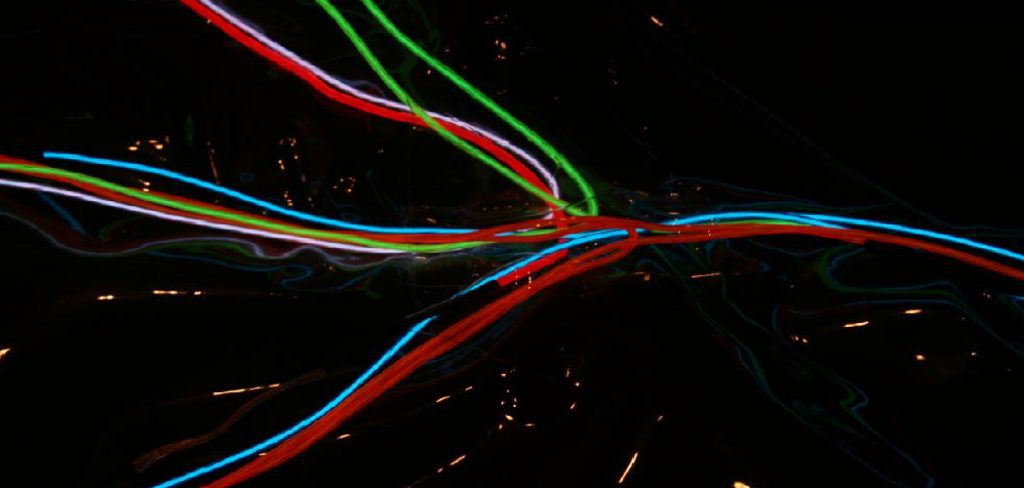
Known for its thin, flexible nature and vibrant glow, EL light is a popular choice for both functional and aesthetic purposes. Understanding how to use and maximize EL light can unlock its potential in various projects and settings. In this article, we will discuss how to use electroluminescent light.
Why Use Electroluminescent Light?
There are several reasons why electroluminescent light is a popular choice in various applications. Here are some of the main benefits of using EL light:
Energy Efficiency:
One of the biggest advantages of EL light is its energy efficiency. It requires very little power to produce a bright and vibrant glow, making it an ideal choice for low-power devices and applications. This makes it a cost-effective and environmentally friendly lighting solution.
Low Heat Emission:
Unlike traditional incandescent bulbs, EL light does not emit large amounts of heat. This is because the light is produced through a process called electroluminescence, where electricity is converted directly into light without generating excessive heat. This makes EL light safer to use in close proximity to other materials and reduces the risk of fire hazards.
Thin and Flexible:
EL panels are incredibly thin and flexible, making them versatile for various projects and settings. They can be easily cut into different shapes or bent around surfaces, allowing for creative designs and applications. Additionally, their lightweight nature makes them ideal for use in clothing, accessories, and other wearable items.
Long Lifespan:
One of the biggest advantages of EL lighting is its long lifespan. On average, EL panels can last for up to 15,000 hours of continuous use. This makes them a cost-effective option as they do not need frequent replacements like traditional light sources. Furthermore, their durability allows them to withstand harsh environments and rough handling without affecting their performance.
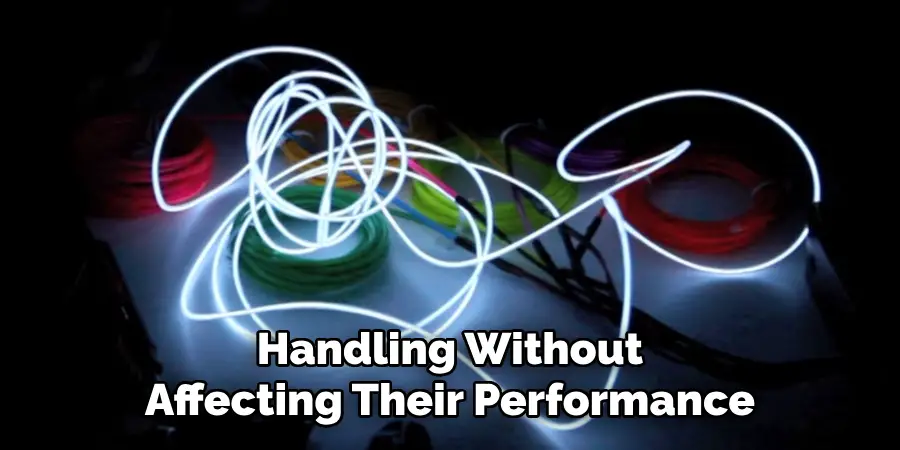
Low Power Consumption:
EL lights require very little power to operate, making them energy-efficient compared to other types of lighting. They consume significantly less electricity than incandescent or fluorescent bulbs while producing a similar level of brightness. This not only reduces energy costs but also has a positive impact on the environment by reducing carbon emissions.
Versatility:
EL lights are available in a wide range of shapes, sizes, and colors. They can be cut into various shapes and sizes to fit different applications and can even be made into flexible displays. This makes them highly versatile and suitable for use in a variety of industries such as advertising, automotive, aerospace, and fashion.
Needed Materials
To create EL lights, the following materials are needed:
- Electroluminescent Phosphor
- Conductive Layers (Usually Made of Tin-doped Indium Oxide)
- Electrical Current Source (Such as a Battery or Power Supply)
- Insulating Layer (Usually Made of Polyester Film)
- Transparent Protective Layer (Often Made of Glass or Plastic)
5 Simple Step-by-Step Guidelines on How to Use Electroluminescent Light
Step 1: Prepare
Begin by gathering all the necessary materials listed above and ensuring they are in good condition. Create a clean and static-free workspace to avoid any contamination or damage to the components. Additionally, check that you have the correct tools, such as wire cutters, connectors, and adhesive materials, if needed.
Review the specifications of your electroluminescent light setup to confirm compatibility of all components. Proper preparation and organization will help streamline the process and ensure successful assembly.
Step 2: Assembling the Components
Begin by laying out all of your components in front of you. It may be helpful to refer to a diagram or instruction manual provided by the manufacturer.
Next, begin connecting your wires and components according to the setup specifications. Use wire cutters to trim any excess length and ensure proper fit. If using adhesive materials, carefully apply them as directed. Take caution when handling delicate components, such as electrodes, as they can easily break or become damaged. Once all connections have been made and secured, power on your electroluminescent light setup and test its functionality. Make any necessary adjustments or repairs before moving on to the next step.
Step 3: Securing the Setup
It is important to secure your electroluminescent light setup in place before use. If the setup will be used for temporary purposes, you can use removable adhesive strips or clips to hold it in place. However, if the setup will be left in place for an extended period of time, it is recommended to use more permanent methods such as screws or brackets.
Before securing the setup, make sure all wiring and connections are properly organized and tucked away to avoid any potential hazards or damage. If your electroluminescent light setup will be exposed to outdoor elements, it is important to weatherproof it using appropriate materials. This can include protective coatings or enclosures to prevent water damage and prolong the life of your setup.
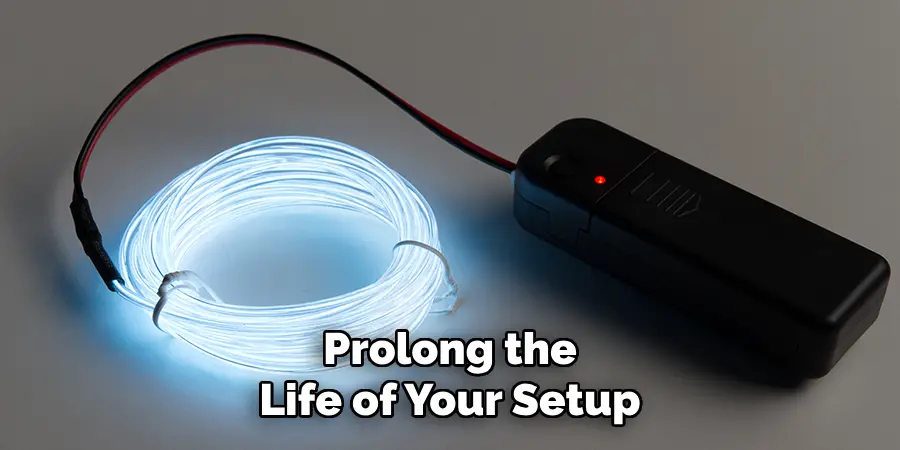
Step 4: Test and Troubleshooting
Once your electroluminescent light setup is fully installed, it is important to test it before finalizing everything. Turn on the power source and make sure all lights are functioning as intended. If there are any issues, troubleshoot by checking connections, wiring, and the power supply. You may also refer to the manufacturer’s instructions for specific troubleshooting steps.
If everything is working properly, you can now secure the setup in its final position. Remember to periodically check for any loose connections or damage to ensure safe and efficient operation.
Step 5: Enjoy Your Electroluminescent Lights!
Congratulations! You have successfully installed your own electroluminescent light setup. Now it’s time to sit back and enjoy the beautiful glow of your lights. Try experimenting with different colors or patterns to create a unique and personalized look.
Following proper safety precautions and maintenance routines on how to use electroluminescent lights, your electroluminescent lights will provide you with long-lasting and energy-efficient lighting. Whether you’re using them for decoration or functional purposes, these lights are sure to enhance any space.
Maintenance and Troubleshooting
Like any other electronic device, electroluminescent lights may require occasional maintenance or troubleshooting. Here are some common issues you may encounter with your setup:
Dim or Flickering Lights:
This could be a sign of a loose connection or damaged wiring. Check all connections and wiring for any signs of wear and tear, and ensure they are securely connected. If the issue persists, it may be necessary to replace the damaged components.
Burnt Out Lights:
If one or more of your electroluminescent lights suddenly stop working, it may be due to a burnt-out bulb. Follow the manufacturer’s instructions for replacing bulbs and ensure you are using the correct replacement.
Uneven Lighting:
If you notice that some areas of your electroluminescent light strip are brighter than others, this could indicate an issue with the power supply or faulty wiring. Check all connections and consider replacing any damaged components if necessary.
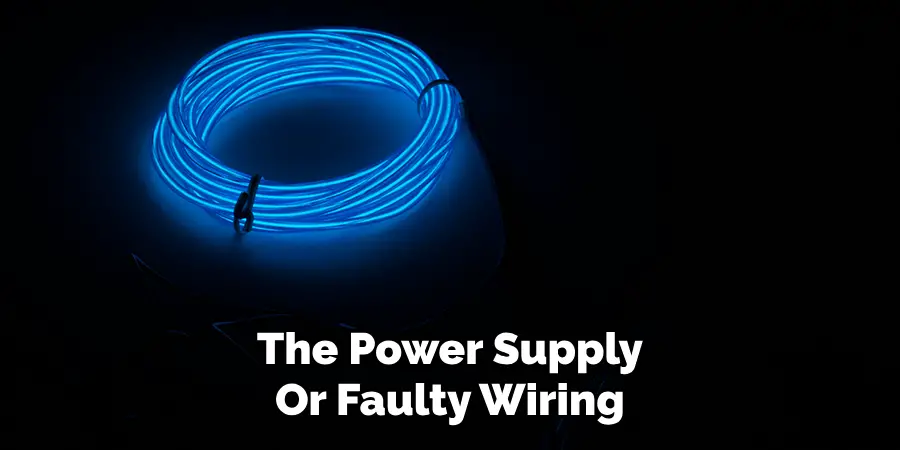
Excessive Heat:
Electroluminescent lights should not generate excessive amounts of heat. If you notice that your light strip is emitting too much heat, this could indicate a problem with the power supply or wiring. Make sure all connections are secure and check for any damaged components.
Color Fading:
Over time, electroluminescent lights may experience color fading due to exposure to sunlight or other sources of UV radiation. To prevent this, make sure to install your light strip in an area where it will not be exposed to direct sunlight. Additionally, regular cleaning of the lights can help maintain their vibrancy.
Waterproofing:
If you plan to use your electroluminescent light strip in outdoor or wet environments, it is important to choose a waterproof option. Look for lights with an IP rating, which indicates the level of protection against water and dust. Generally, a rating of IP65 or higher is recommended for outdoor use.
DIY Projects:
Electroluminescent lights are not just limited to pre-made light strips – they can also be used in various DIY projects! With the right tools and materials, you can create custom designs and shapes using EL wire or panels. Some popular ideas include costumes, signs, and even bike decorations. Let your creativity run wild!
Frequently Asked Questions
Q1: How Long Do Electroluminescent Lights Last?
A: On average, EL lights can last up to 10,000 hours of continuous use. However, this lifespan may vary depending on the brand and quality of the product.
Q2: Can El Lights Be Cut or Trimmed?
A: Yes, EL wire can be cut into smaller sections and EL panels can be trimmed to fit a specific shape or design. Just make sure to follow the manufacturer’s instructions and use sharp scissors or a blade.
Q3: Are EL Lights Waterproof?
A: Most EL lights are not waterproof, so it is important to check the product specifications before using them in wet conditions. However, there are some waterproof options available on the market.
Q4: How Do I Power EL Lights?
A: EL lights require an inverter to convert a DC power source into AC power for them to function properly. The type of inverter needed may vary depending on the size and length of your EL lights.
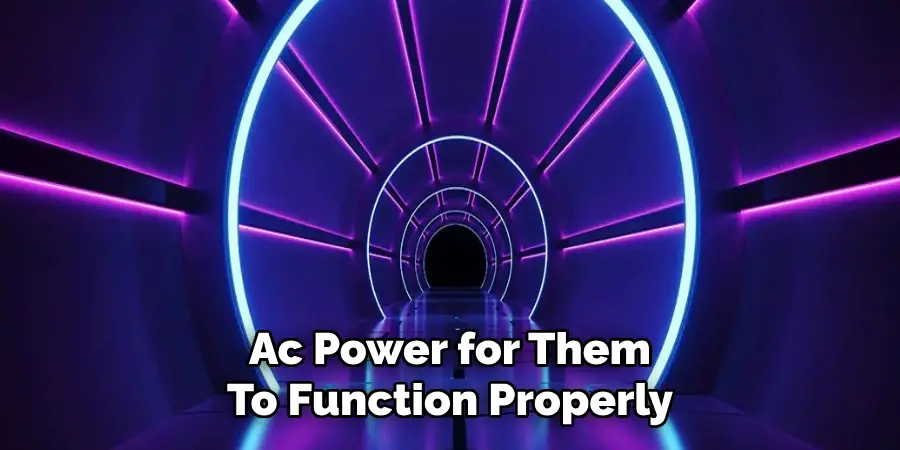
Conclusion
Electroluminescent lights are a versatile and creative lighting solution that can be used in countless ways, from practical applications to artistic endeavors. Whether you’re looking to add a futuristic touch to a room, enhance a DIY project, or create a unique outdoor display, EL lights offer endless possibilities.
With their energy efficiency, flexibility, and vibrant glow, they are an excellent choice for anyone seeking a modern and eye-catching lighting option. Explore the potential of electroluminescent lighting and bring your bright ideas to life! Thanks for reading this article on how to use electroluminescent light.

